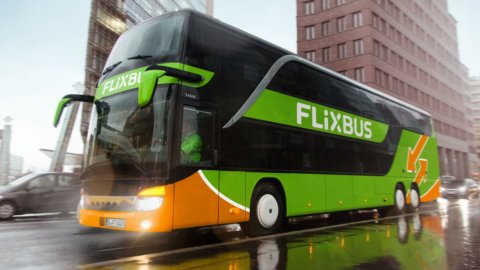Flixbus continues to grow, in Italy and around the world. The low-cost bus company founded in Germany now connects 450 Italian cities, from North to South (50 cities in Calabria and Sicily alone) and in the 2018 calendar year it recorded a growth in passengers transported in Italy by more than 50% compared to 2017. The increase was driven not by the major routes, i.e. the connections between the main cities of the country, but also by the routes for airports, abroad and small and medium centres not adequately connected by traditional networks, especially in the Centre-South.
“The combination of tradition and innovation is reconfirmed as a winning formula. All the more so in a country like Italy, where road transport is a deeply rooted reality and there is an increase in students and young off-site workers, a category of passengers that is increasingly digitized and which in fact constitutes the majority of our users. Also in 2019 we will continue to work to allow anyone to travel whenever they want, for business or pleasure,” he said. Andrea Incondi, Managing Director of FlixBus Italy.
BIG CITIES AND AIRPORTS
The great national guidelines therefore continue to grow, as Milan-Rome, Turin-Venice and Naples-Bari, but the most interesting performances for 2018 concern international routes and those to airports and small and medium centres. Among the lines that recorded the greatest influx in 2018, Venice-Paris (first overall among the lines operated by Italy), Rome-Frankfurt and Turin-Zagreb, while among the destinations that recorded the most arrivals are the Orio al Serio airports (+89% of arrivals compared to 2017), Fiumicino (+215%) and Malpensa (+260%). The picture that emerges is that of a user increasingly inclined to choose the bus for long distances and resort to forms of intermodal mobility, preferring the combined use of collective means to that of private means.
SMALL AND MEDIUM CENTRES
But the most significant growth concerns small and medium-sized towns, the real hub of FlixBus' national expansion in 2018: among medium-sized municipalities, many have seen arrivals double (such as Termoli), triple (such as Cattolica), quadruple (such as Alba) or even quintuple (such as Martina Franca). Flows to small municipalities are also increasing, thanks to the integration of many smaller towns into the network, from the mountain resorts in Trentino to those of the Ionian coast in Calabria, in line with the extension pursued throughout Europe, where 40% of FlixBus stops are found in municipalities with a population of less than 20.000 inhabitants.
FLIXBUS IN THE WORLD
Globally, the German group reports a 40% growth in daily connections in 2018 alone (there are over 350.000 daily connections in 29 countries), as well as the extension of the service to the United States (in 2019 it will also arrive in Texas and New York City) and the arrival in new European markets. Currently in the USA Flixbus colleagues, among others, The Angeles, San Francisco, San Diego, Las Vegas, Tucson e Phoenix.
“We started writing the FlixBus story five years ago, and we continue to outdo ourselves every year. In the last year alone, we've taken our service overseas by inaugurating the US network, launched FlixTrain in Germany, and launched the first electric long-distance buses in France and Germany. We have opened new markets in Poland and Sweden and the first national connections in Belgium and Switzerland, and we have introduced new technological services on board our fleet. And in 2019 we will continue to grow even more,” he said André Schwammlein, founder and CEO of FlixMobility.





